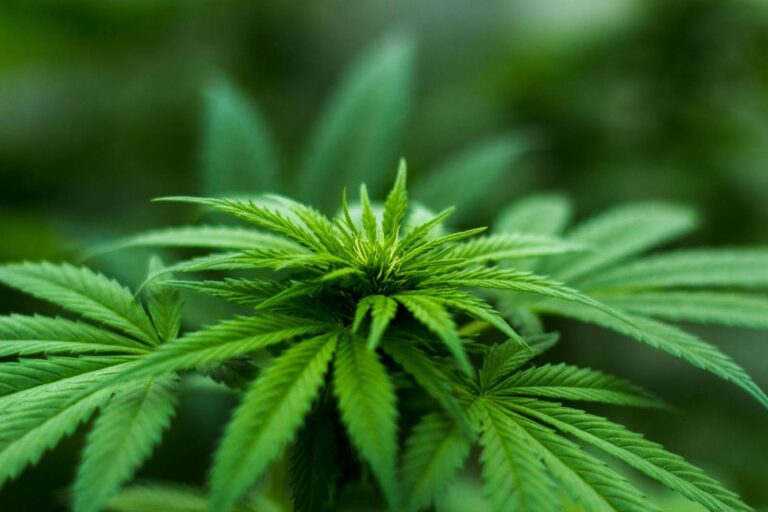Have you ever invested time and effort into growing cannabis plants only to find them struggling with pests, yellowing leaves, or stunted growth? It can feel like a setback when your plants don’t respond as expected despite your dedication. You’re not alone. Many growers face these challenges, especially when just starting out or experimenting with new techniques.
One of the biggest challenges is identifying what went wrong. Was it the soil quality, nutrient imbalance, poor airflow, or something else entirely? The good news is that you can create a thriving environment that supports healthy growth and resilience with the right approach. The secret lies in understanding the essential needs of your plants and taking proactive measures to meet them consistently.
Whether you are growing indoors or outdoors, the basic principles remain the same. You need to balance nutrients, maintain proper airflow, manage moisture, and closely monitor potential threats like pests and diseases. Once you understand how to balance these factors, your cannabis plants will grow stronger and healthier, rewarding you with a flourishing yield. Let’s dive into the key practices that will set you up for success.
The Importance of a Healthy Environment
Creating a healthy environment is the foundation of growing healthy weed plants. A clean and controlled environment directly impacts the well-being and productivity of your plants. Here’s why a healthy environment matters:
- Prevent Pathogen Growth: A clean environment minimizes the presence of bacteria, fungi, and other pathogens.
- Enhance Plant Health: Proper hygiene reduces stress on plants, promoting healthier and stronger growth.
- Optimize Yield Quality: Cleanliness contributes to consistent quality by reducing contamination risks.
- Save Time and Resources: Addressing hygiene proactively prevents larger issues, saving time and reducing the need for intensive interventions.
- Boost Plant Resilience: Regular cleaning and maintenance make plants more resilient to environmental changes and pest attacks.
- Enhance Air Quality: Maintaining clean surfaces and controlling dust reduces particulate matter that can affect plant respiration.
- Improve Efficiency: Keeping the workspace organized minimizes downtime and helps maintain consistent routines.
Now, let us dive straight into the tips to ensure the healthy growth of your cannabis plants.
Tips for Ensuring Healthy Cannabis Growth
To achieve vigorous and resilient cannabis plants, it is essential to focus on maintaining their health from the ground up. This means not only providing the right nutrients and environment but also taking proactive measures to prevent issues before they arise. Implementing practical strategies ensures your cannabis plants remain strong, healthy, and productive throughout their growth cycle.
Nutrient Management and Balance
Providing the right nutrients is crucial for strong cannabis growth. Here are some of the tips to manage nutrients in your cannabis plant:
- Select High-Quality Nutrients: Always choose products from reputable suppliers. This ensures consistency and reduces the risk of introducing contaminants.
- Avoid Compromising on Quality: While it may be tempting to opt for cheaper alternatives, consider the manufacturer’s reputation. Poor-quality nutrients can lead to deficiencies or toxic build-up.
- Maintain Nutrient Consistency: Frequently changing nutrient brands or formulations can stress plants. If you decide to switch products, do so gradually and observe how your plants respond.
- Monitor Plant Reactions: Watch leaf color and growth patterns closely. These can indicate nutrient imbalances that need correction.
- Customize Nutrient Plans: Different strains may have unique nutritional needs. Adjust your feeding schedule based on your specific plant’s requirements.
- Understand Nutrient Ratios: Different growth stages require different nutrient ratios. For instance, plants need more nitrogen during the vegetative stage, while the flowering stage requires increased phosphorus and potassium.
- Use Organic Amendments: Incorporate organic materials like compost, worm castings, or kelp to naturally enrich the soil and enhance nutrient availability.
- Regularly Test the Soil: Conduct periodic soil tests to identify nutrient deficiencies or imbalances early on.
- Supplement as Needed: Be prepared to provide extra micronutrients like calcium or magnesium if you notice deficiency symptoms.
- Avoid Overfeeding: Over-fertilizing can lead to nutrient burn, characterized by yellowing or burnt leaf tips. Start with lower doses and increase gradually as needed. To manage your cultivation tasks and prevent nutrient burn, PlanaCan provides a visual timeline for planning and tracking.
You can plan months ahead while managing daily activities. The calendar adjusts ongoing tasks, helping you keep up with changing needs. PlanaCan centralizes information, ensuring no task is overlooked.
Monitoring and Adjusting pH Levels
Maintaining optimal pH levels in your growing medium is crucial for nutrient absorption. Here are some of the key tips for pH management:
- Understand the Ideal Range: While cannabis typically thrives in a pH of 6.0 to 7.0 in soil, hydroponic systems may perform better at slightly lower pH levels, usually between 5.5 and 6.0..
- Monitor Regularly: Use a reliable pH meter or testing kit to regularly check the pH of your soil or hydroponic solution. Catching fluctuations early helps prevent problems before they escalate. PlanaCan enables growers to generate detailed harvest reports to make data-driven decisions, capturing data on cultivation decisions and their impact on yield.
This information is organized in one place, making it easier to analyze trends over time. Reviewing these reports allows you to identify successful methods, avoid past mistakes, and continuously refine your processes for higher yields and profitability.
- Avoid Overcorrection: Slight fluctuations are normal and usually manageable by the plant itself. Small fluctuations in pH levels are normal and usually won’t harm your plants.
- Use pH Buffers: Adding pH buffers to your nutrient solution can help stabilize levels and reduce drastic shifts.
- Keep Records: Track your pH readings and any adjustments you make. This data will help you understand trends and make informed decisions.
- Calibrate Your pH Meter: Regular calibration of your pH meter ensures accurate readings. Inaccurate measurements can lead to incorrect adjustments and plant stress.
- Check Runoff pH: Testing the pH of runoff water can give insights into root zone conditions. A significant difference between input and output pH may indicate issues in the growing medium.
- Use Natural pH Adjusters: Organic solutions like vinegar or baking soda can gently adjust pH levels. Compared to synthetic chemicals, they are less likely to cause sudden shifts.
- Combine pH Monitoring with EC Testing: Monitoring both pH and electrical conductivity (EC) provides a complete picture of nutrient absorption. An optimal pH but high EC may indicate nutrient excess.
- Be Consistent with Water Sources: Different water sources can have varying pH levels. Stick to a consistent source to minimize fluctuations and maintain stable conditions.
Maintaining a Strong and Healthy Root Zone
The root zone is the heart of your plant’s health. Healthy roots support nutrient uptake, water absorption, and overall plant stability. Some of the key tips to maintain a healthy root zone:
- Use Strain-Specific Microbes: Incorporating beneficial microbes tailored to your specific cannabis strain can promote healthier root development. These microbes enhance nutrient uptake and improve resistance to stress.
- Practice Proper Watering Techniques: Overwatering or underwatering can damage the root system. Water plants when the top few inches of soil feel dry, ensuring moisture reaches the root zone without oversaturating.
- Aerate the Soil: Compacted soil can suffocate roots and inhibit growth. Use well-aerated soil mixes and periodically loosen the top layer to promote oxygen flow.
- Monitor Root Health: Regularly check for signs of root rot or fungal infections, such as foul odors or discolored roots. Address issues promptly to prevent their spread. PlanaCan lets you generate detailed harvest reports to improve cultivation outcomes, capturing data on decisions and their impact on yield. This organized information makes identifying trends, refining methods, and boosting profitability easy.
- Enhance Drainage: Ensure your growing medium allows excess water to drain effectively. Stagnant water can lead to root rot and other fungal problems.
- Use Mycorrhizal Fungi: Adding mycorrhizal inoculants helps roots establish stronger networks and improves nutrient absorption.
- Maintain Optimal Root Zone Temperature: Roots are sensitive to temperature extremes. Keep the root zone between 65-75°F (18-24°C) to encourage healthy growth.
Ensuring Adequate Light and Airflow
Healthy weed plants thrive when they receive the right balance of light and airflow. Here are some of the key tips for light and airflow management:
- Optimize Canopy Structure: Train your plants through techniques like topping or low-stress training (LST) to encourage even light distribution. An even canopy ensures that all leaves receive adequate light, minimizing shaded areas.
- Choose the Right Lighting: Use full-spectrum grow lights for indoor cultivation to mimic natural sunlight. Position lights at the optimal height to prevent light burn while still providing sufficient intensity.
- Maintain Air Circulation: Stagnant air can increase the risk of mold and mildew. Install oscillating fans to move air gently around the plants, avoiding direct blasts that can stress foliage.
- Ventilation Systems: Implement exhaust fans and air filtration to remove stale air and bring in fresh oxygen. Proper ventilation helps control humidity and temperature, which are crucial for plant health.
- Monitor Temperature and Humidity: Excessive heat from grow lights can stress plants. Use temperature and humidity sensors to maintain ideal conditions, especially during flowering when mold risks increase.
- Avoid Wind Burn: Position fans strategically to create a gentle breeze rather than strong gusts. Wind burn can cause leaf edges to curl and dry out
Managing Water and Humidity Levels
Maintaining moisture levels and controlling humidity are essential for successful cannabis cultivation.
Key Tips for Water Management
- Keep Soil Moist but Not Soggy: Overwatering suffocates roots and can lead to root rot, while underwatering causes wilting and nutrient deficiencies. Water your plants when the top inch of soil feels dry.
- Check Drainage: Ensure that your growing medium allows excess water to escape. Poor drainage can result in waterlogged roots and fungal infections.
- Water According to Growth Stage: Seedlings need less water than mature plants. As roots develop, gradually increase the amount and frequency of watering.
- Use Room-Temperature Water: Extremely cold or hot water can shock the root system. Keep water around 68-72°F (20-22°C) for optimal absorption.
Key Tips for Humidity Control
- Match Humidity to Growth Stage:
- Seedlings: 65-70% humidity helps with initial root development.
- Vegetative Stage: Lower the humidity to around 40-70% to reduce mold risks.
- Flowering Stage: Maintain 40-50% humidity to prevent bud rot.
- Use Dehumidifiers and Humidifiers: Adjust humidity levels using the right equipment, especially in enclosed grow spaces.
- Monitor Regularly: Use hygrometers to monitor humidity levels throughout the day. Sudden spikes or drops can stress plants. Tracking these changes helps you maintain better control and support healthier growth.
PlanaCan helps by letting you generate detailed reports for each harvest, capturing data on your cultivation decisions and their impact on yield. With everything in one place, it’s easier to spot trends, learn from past results, and refine your process for better outcomes and higher profitability.
- Improve Air Circulation: Good airflow helps maintain consistent humidity and reduces leaf moisture buildup.
- Water Plants in the Morning: This practice allows moisture to evaporate during the day, lowering the risk of mold and mildew at night.
Preventing and Controlling Pest Infestations
Implementing preventative measures and responding promptly to early signs of infestation are essential for maintaining plant health. Here are some of the key strategies for pest prevention and control:
- Regular Inspections: Inspect plants daily for signs of pests, including discolored leaves, holes, or visible insects. Catching problems early makes treatment more effective.
- Maintain a Clean Growing Area: Keep your grow space tidy to minimize pest habitats. Dispose of plant debris and clean surfaces regularly.
- Introduce Beneficial Insects: Ladybugs, predatory mites, and other beneficial insects can naturally reduce pest populations without harming your cannabis plants.
- Use Companion Planting: Plant herbs like basil or marigolds nearby to repel pests naturally. Their scents can deter common cannabis pests like aphids and spider mites.
- Natural Pest Control Sprays: Use neem oil, insecticidal soap, or homemade garlic and chili sprays as preventative measures. Always test on a small area before full application.
- Sticky Traps and Barriers: Use yellow sticky traps to monitor and capture flying insects. Placing barriers around the base of plants can also deter crawling pests.
- Maintain Optimal Conditions: Pests thrive in high humidity and poorly ventilated areas. Keeping airflow consistent and humidity within recommended ranges reduces pest outbreaks. PlanaCan makes this easier by letting you define and automate cultivation processes using customizable templates.
You can outline each step, from planting to harvest, for specific strains or cycles. Once your templates are set up, just a few clicks are all it takes to schedule tasks on the calendar, keeping your workflow consistent.
- Rotate Crops: If growing outdoors, rotating crops each season can help disrupt pest life cycles.
- Quarantine New Plants: Before introducing new plants into your grow space, isolate and inspect them to ensure they are pest-free.
- Use Organic Soil Amendments: Compost and worm castings can introduce beneficial microbes that enhance plant immunity, making them less susceptible to infestations.
Conclusion
Cultivating healthy cannabis plants requires balancing environmental factors with proper nutrition and consistent care. By maintaining hygiene, managing nutrients carefully, and monitoring pH and moisture levels, you set the stage for strong and healthy growth. A proactive approach not only prevents common problems but also ensures your plants thrive, rewarding you with higher yields and healthier foliage.
Managing cannabis cultivation effectively requires careful planning and execution. This is where PlanaCan can make a difference. It allows you to simplify task management by defining cultivation processes using customizable templates. From initial planting to the final harvest, each step can be outlined and scheduled on a calendar with just a few clicks. This ensures consistency and efficiency, no matter the strain or harvest cycle.
Another powerful feature is a visual timeline for planning and tracking tasks. You can plan months ahead while keeping up with daily activities. The ability to adjust tasks on the go makes it easy to accommodate changing conditions, ensuring no essential task is missed.
If you’re looking to maximize your cannabis yields and streamline your cultivation process, PlanaCan can help you achieve your goals. Schedule a free call today to discover how PlanaCan can revolutionize your cannabis growing experience.




